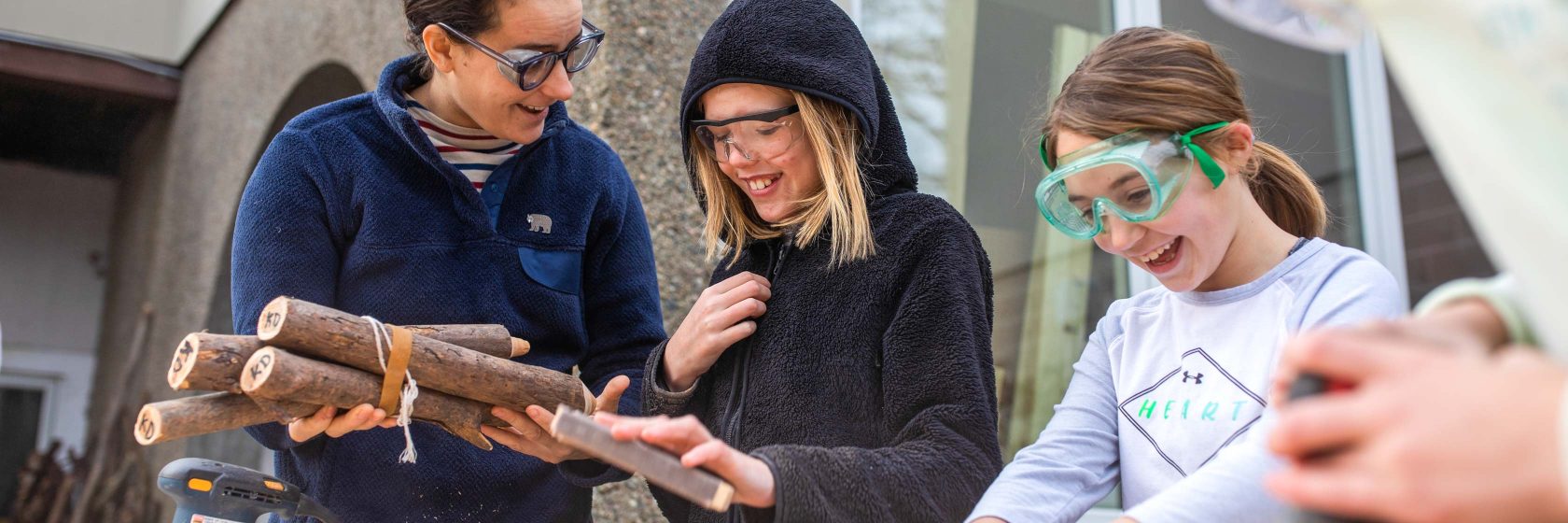
Woodworking
DCD’s Woodshop is a cross-curricular space in which children gain technical, conceptual, creative, and social skills.
What is so unique and powerful about this space is that every child from pre-k to grade 8 has an opportunity to design and build a wide range of projects, ranging from utilitarian to sculptural, in a timeless medium. Our youngest students begin with basic hand tools while our older students learn to operate power tools and machines in the middle school grades.
Throughout their years in the Woodshop, students develop confidence and coordination, skills that extend beyond this space. Being a designer and builder becomes not simply a one-off activity, but an element engrained in each student’s identity.
Students leave the Woodshop empowered – they understand the beauty of wood, how to use tools, and with an ability to design and build projects for their needs and those around them.
Equity, Multicultural Education, and Social Justice
The work we do in the shop is rooted in Equity, Multicultural education, and Social Justice. Looking at woodcraft from communities all around the world, from Indigenous peoples to the growing population of female woodworkers today, we discuss how woodworking has played a critical role in civilization. Historical and contemporary stories often inspire the work that we do and often lead us to think about and practice how we use the valuable skill of carpentry to help others.
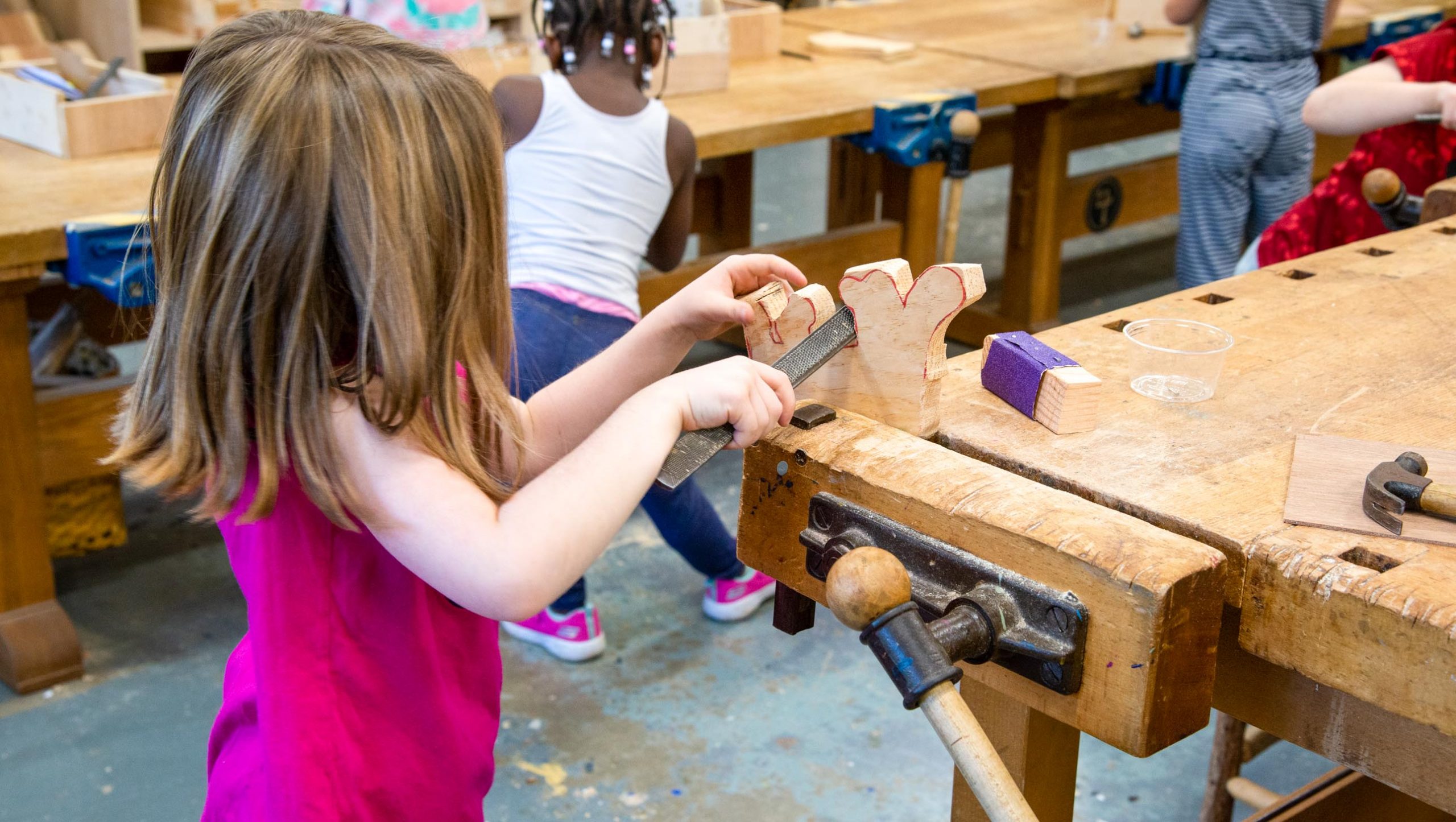
In PK-2nd grade, the focus in the woodshop is largely on developing shop habits. They develop an understanding of safety procedures, setup and maintenance of one’s work station, and cleanup. Students use basic hand tools such as coping saws, files, sanding blocks, hand-crank drills, spokeshaves, and screwdrivers. The heart of the curriculum is rooted in the exploration of the coping saw, a tool with a thin blade designed to cut curves. Projects have included push-toys, coat racks, shelves, birdhouses, toy boats, and more.
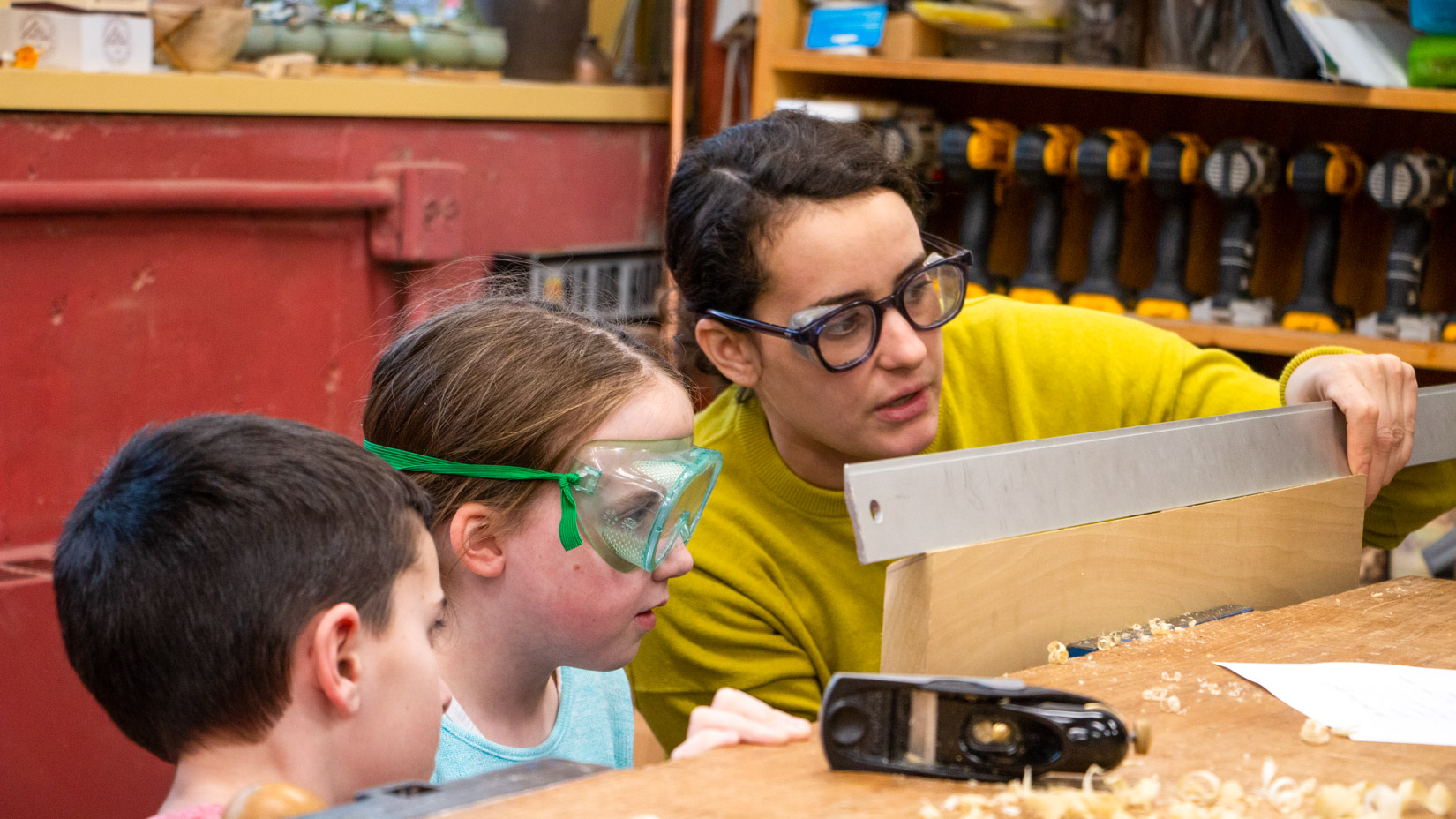
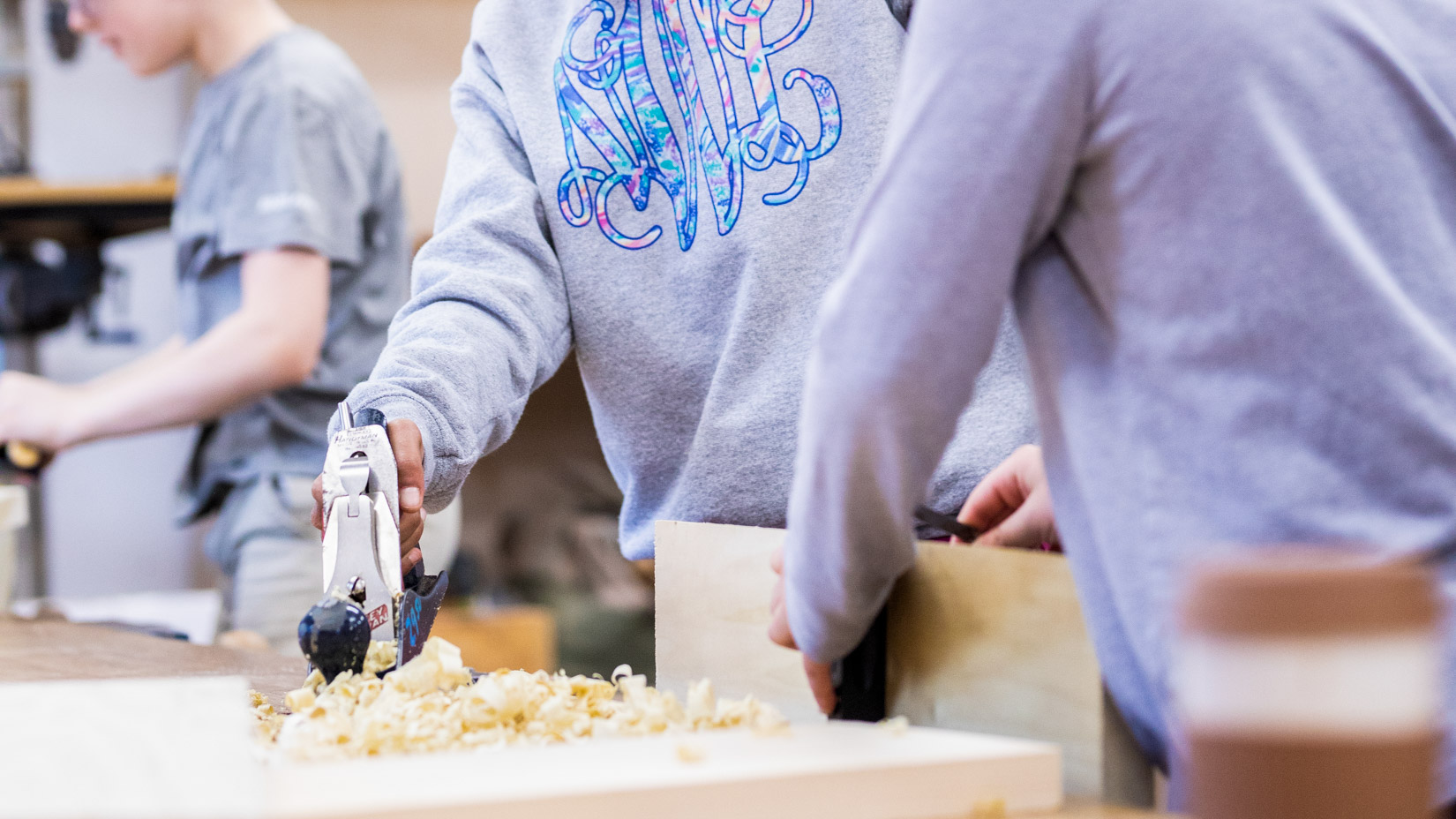
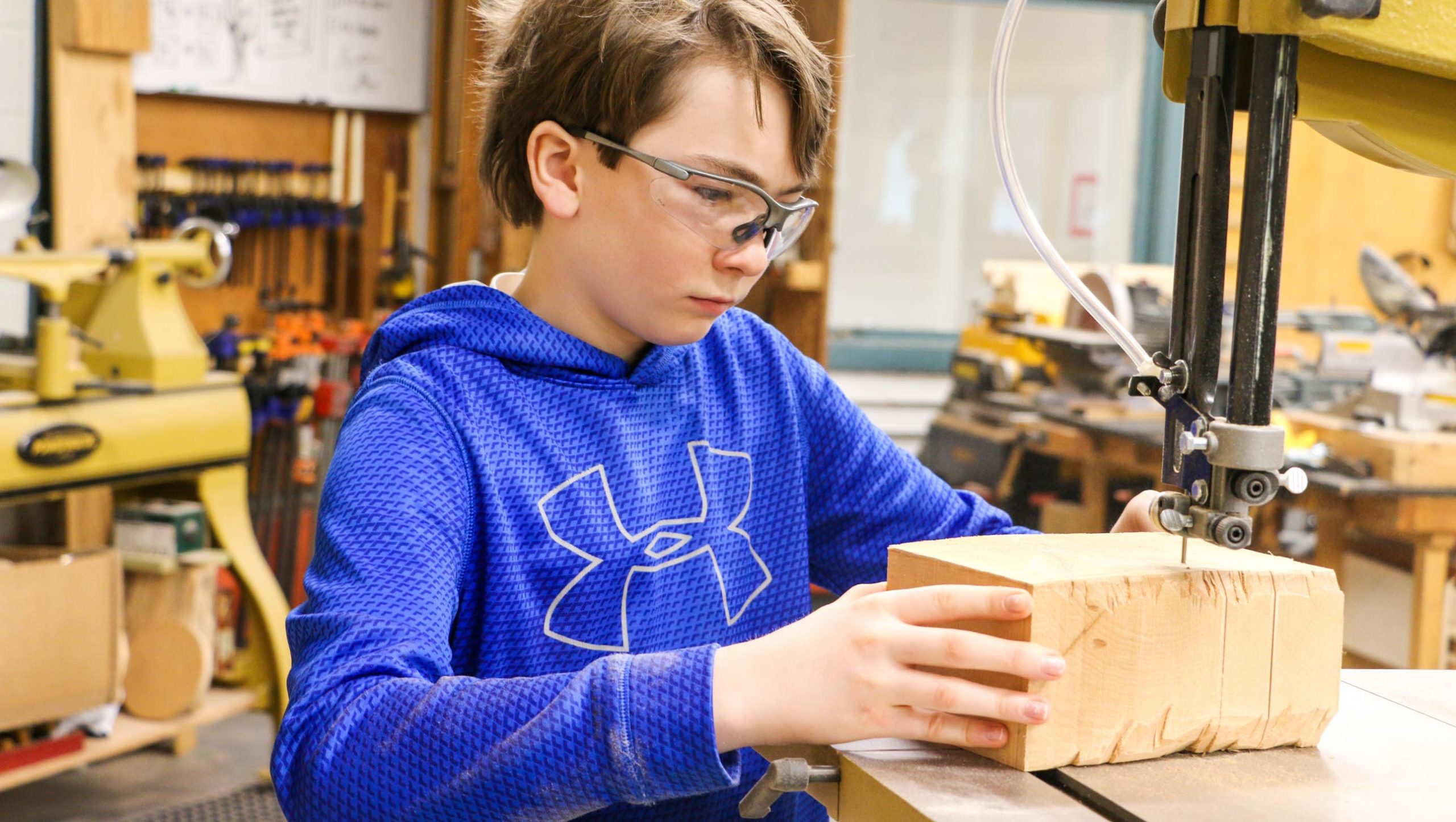
By Middle School, students incorporate what they have learned in earlier grades into fairly advanced projects in our elective-based program. Using machines such as the band saw, scroll saw, chop saw, drill press, and other handheld power tools and pushing their work to new stylistic and utilitarian levels, they are making more advanced joints, designing and building work that has real structural properties.
In Middle School we also begin to do more service-oriented work, thinking about how we can use our skills to better our DCD community and beyond. We consider why woodworking matters—what woodworking offers us as individuals and what it offers the world today. Projects have included puzzles, advanced boxes, lamps, kitchen tools/utensils, spoon-carving, bowl-carving, side-tables, skateboards, service woodworking for a local farm, relief carvings, and much more.
